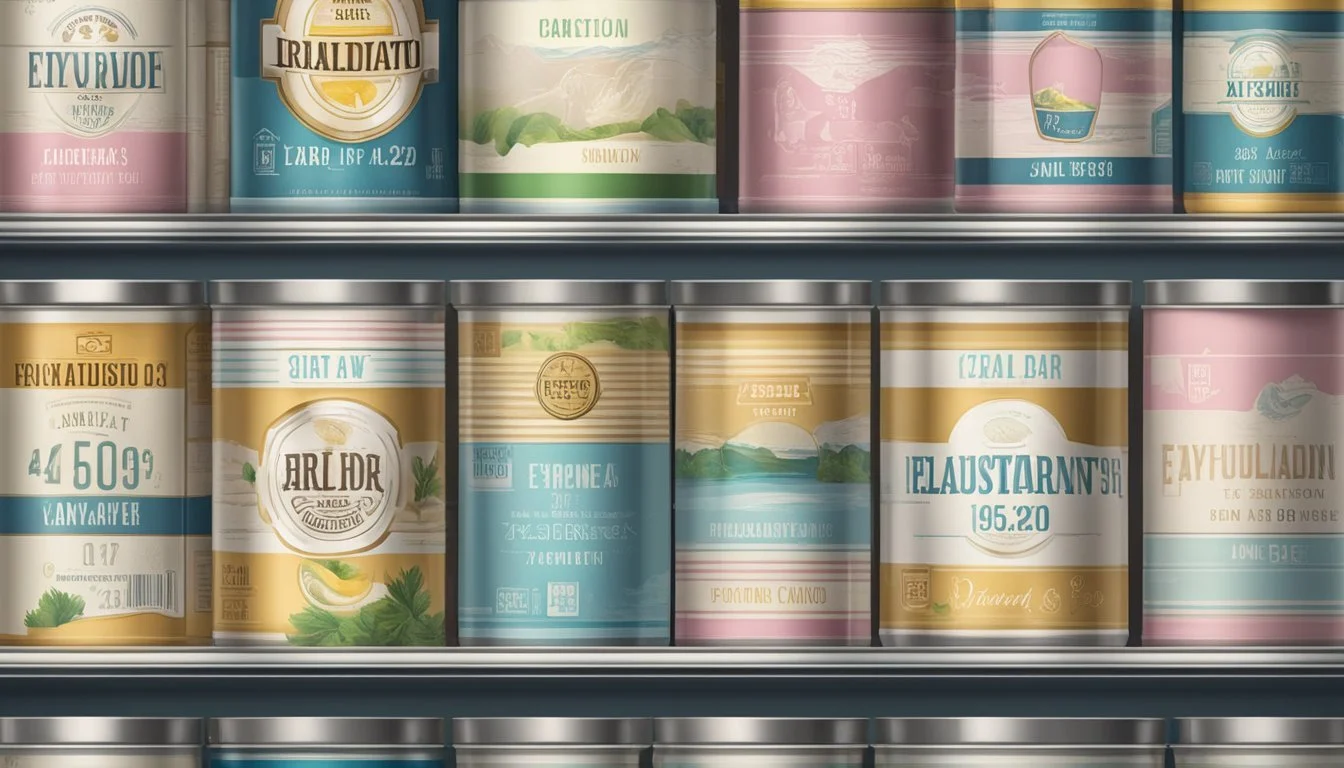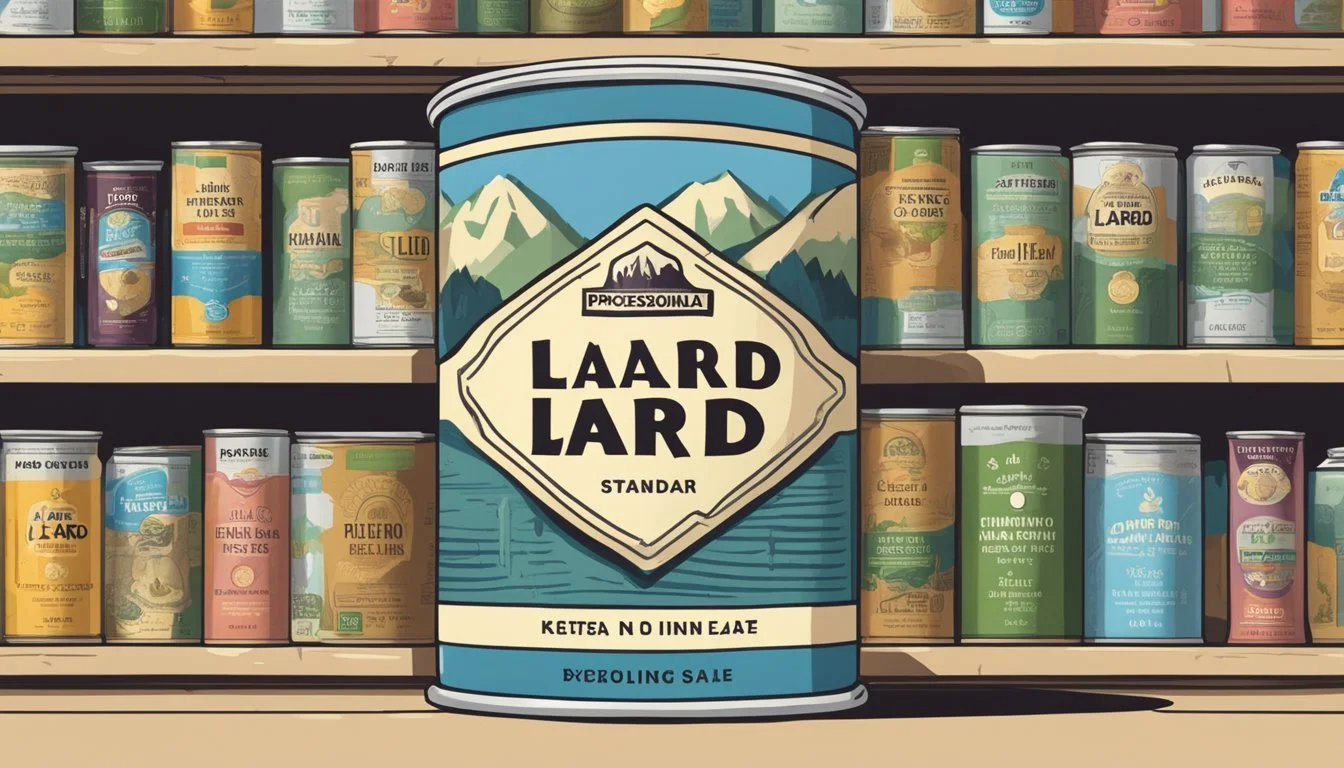How Long Does Canned Lard Last?
Shelf Life Explained
Lard, the rendered fat from a pig, is a traditional cooking fat that has been used for centuries. Its versatility allows it to be used in a plethora of culinary applications, ranging from frying to baking. The shelf life of canned lard is an important consideration for consumers who value both quality and food safety. When properly stored in a cool, dark place, unopened canned lard can last for an extended period while maintaining its quality, making it a convenient staple in many kitchens.
Over time, however, even canned lard can go rancid. Rancidity in lard is caused by the breakdown of fats, leading to changes in both flavor and aroma, which can impact the taste of the foods it is used in. To ensure the best culinary results and avoid the unpleasantness of rancid lard, it's important to understand the signs of spoilage and the factors that can affect the shelf life of this cooking fat. When stored in ideal conditions—cool and away from direct light—canned lard can maintain its quality well beyond its printed expiration date, often up to one year, though this can vary depending on various factors including the container’s seal and the storage environment.
Understanding Lard
Lard is a traditional cooking fat with a rich history in culinary arts. It is prized for its flavor and versatility in various applications from frying to baking.
Definition and Types
Lard refers to fat from pigs that is rendered and processed for use in cooking. There are two main types of lard:
Pure Lard: This is rendered fat that's been clarified to remove meat particles and water. It has a creamy white appearance and a neutral taste, making it suitable for both savory and sweet dishes.
Leaf Lard: The highest grade of lard, it is made from the visceral fat around the kidneys and inside the loin of a pig. Leaf lard is particularly valued for baking due to its delicate, flaky texture when solid, and it imparts minimal flavor to finished dishes.
Benefits and Culinary Uses
Lard possesses several benefits making it a desirable cooking ingredient, including its high smoke point and the rich mouthfeel it brings to dishes. Some key culinary uses include:
Baking: Renowned for creating flaky pie crusts and pastries, leaf lard is the preferred choice among bakers due to its purity and ability to enhance texture without influencing flavor.
Cooking: Pure lard is versatile and can be used in frying and sautéing, imparting a depth of flavor that enhances the taste of a wide variety of dishes.
Lard's composition allows for high heat cooking, maintaining stability and providing a consistent cooking medium. Whether one is deep-frying chicken to achieve a golden-brown exterior or sautéing vegetables for a soup base, lard contributes both texture and richness.
Storage Fundamentals
Proper storage is essential to maximize the shelf life of canned lard, ensure its freshness, and prevent it from going rancid. Maintaining an airtight environment and a consistent temperature are the key components to consider.
Proper Storage Conditions
Lard, a form of rendered fat, requires careful storage practices to retain its quality over time. The optimal storage conditions involve keeping lard in a cool, dark place such as a pantry or cellar, where the temperature is steadily below 68°F (20°C). However, for extended shelf life, refrigeration is recommended. A refrigerated environment should maintain temperatures between 32°F and 40°F (0°C to 4°C). A further step would be freezing lard, which can extend its usability even beyond the typical expiration period.
Room Temperature: 4-6 months.
Refrigerated: up to 1 year.
Frozen: potentially longer than 1 year, varying based on freezing method and container integrity.
Containers and Packaging
When storing lard, the type of container used is pivotal to maintaining freshness. Lard should be stored in airtight containers or jars to shield it from air exposure, which can spoil its quality. Canning jars are an optimal choice, as they are designed for long-term storage and can create a vacuum seal when properly used.
Airtight Container: Sealable and ideal for both refrigeration and freezing.
Glass Jars: Protect lard from light and can be sealed tightly.
Vacuum-Sealed Bags: Effective for freezing, minimizes air exposure and freezer burn.
It is crucial to ensure that any containers or packaging used for storing lard are both clean and dry prior to use to avoid introducing moisture, which can lead to spoilage. Whether you choose to refrigerate or freeze your lard, the consistent use of well-sealed containers will contribute significantly to maintaining its quality over time.
Spotting Spoilage
Canned lard has a substantial shelf life, but it is crucial to recognize signs of spoilage to ensure food safety. Discerning the deterioration of lard involves checking for changes in appearance, smell, and texture.
Signs of Deterioration
Visual Indicators: One should inspect the lard for any discoloration or mold growth. The presence of these can denote spoilage. Typically, fresh lard is white and consistent in color, so any deviation could be a warning.
Odor: A rancid smell is a primary indicator of spoilage. Fresh lard has a mild, characteristic scent. If the lard emits a strong, unpleasant odor, it has likely gone rancid and should not be used.
Health Implications of Spoiled Lard
Consumption Risks: Using spoiled lard can lead to foodborne illnesses. Rancidity is caused by the oxidation of fats, which can produce harmful compounds.
Contamination: Spoiled lard may contain bacteria that are not visible to the naked eye. Even if there is no visible mold or significant discoloration, one should err on the side of caution if the lard smells off or has an unusual texture.
It is essential to trust one's senses when determining the quality of canned lard and to avoid using any lard that shows signs of spoilage.
Maximizing Shelf Life
To maintain the quality and extend the shelf life of canned lard, one must adhere to proper storage practices and understand the potential for reuse.
Tips for Long-Term Storage
Keep It Cool: Lard should be stored at a consistent, cool temperature. Room temperature can shorten its shelf life, while the refrigerator can extend it up to a year. For even longer preservation, freezing is an option that can maintain the lard's quality for several years.
Airtight Containers: After lard is rendered and solidifies, transferring it into airtight containers prevents the introduction of contaminants and reduces the chances of the lard going rancid.
Label With Date: Clearly labeling containers with the date of rendering assists in tracking how long the lard has been in storage and ensures it is used within its optimal shelf life period.
Reusing and Recycling Lard
Straining to Remove Particles: When reusing lard, it is critical to filter out any leftover food particles to minimize the potential for spoilage. Straining through a fine mesh or cheesecloth will purify the lard for reuse.
Solidification: Allow the lard to solidify after each use before storing it again. This ensures that it maintains its texture and quality, making it readily available for the next use.
Alternative Fats and Oils
When considering longevity and health in the kitchen, one must assess alternative fats and oils and their respective storage lives and nutritional profiles.
Comparative Shelf Lives
Butter: Typically remains good for 1-2 months in the refrigerator after the sell-by date and can last up to 6-9 months when frozen. Bacon Grease: Can be stored for up to 6 months in the refrigerator before it starts to go rancid. Ghee: Having a longer shelf life due to its lack of milk solids, ghee can last up to a year in a cool, dark place without refrigeration. Olive Oil: Properly stored olive oil has a shelf life of up to 2 years, although some experts recommend using it within 12-14 months for optimal freshness. Shortening: It remains stable for up to 2 years when unopened and 1 year once opened when stored in a cool, dark place.
Healthier Substitutes
Olive Oil: High in monounsaturated fats, olive oil is considered a healthier option for cooking, linked to lower heart disease risk. Ghee: Clarified butter, or ghee, is free of lactose and casein and offers high smoke points, fitting those with dietary restrictions without sacrificing a buttery taste. Monounsaturated Fats: Sources of these “healthier fats,” like olive oil, may contribute to better heart health when used in place of saturated fats found in products like bacon grease and butter.
Entities such as butter and bacon grease are high in saturated fats, which are generally less healthy when consumed in large amounts. In contrast, products such as olive oil are high in monounsaturated fats and are considered a healthier source of dietary fat. Ghee and shortening can serve as alternatives, with ghee being a traditional choice known for its rich, nutty flavor and shortening being favored for its ability to create flaky layers in baked goods. When choosing an alternative fat or oil, it is essential to consider both the shelf life and the health impact of the source, and how it is rendered and used in cooking.
Frequently Asked Questions
This section addresses common concerns regarding the longevity and maintenance of canned lard, with a focus on its shelf life and appropriate storage practices.
Shelf Life Queries
Does canned lard go bad?
Yes, canned lard can go bad. The expiration date generally indicates when it should be consumed by for optimum quality.
What is the average shelf life of canned lard stored at room temperature?
When stored in a cool, dry place, canned lard typically has a shelf life of 1-2 years at room temperature.
Storage Technique Inquiries
Does canned lard need to be refrigerated?
Refrigeration can extend the life of canned lard, keeping it fresher for longer. It is best stored at 32°F to 40°F (0°C to 4°C).
Is labeling important when storing canned lard?
Absolutely. One should label the container with the date of storage to track its age and ensure it is used before potentially becoming rancid.
How does one effectively store lard to maintain its quality?
Lard should be kept in an airtight container and placed in a location that remains consistently cool and free from temperature fluctuations.






